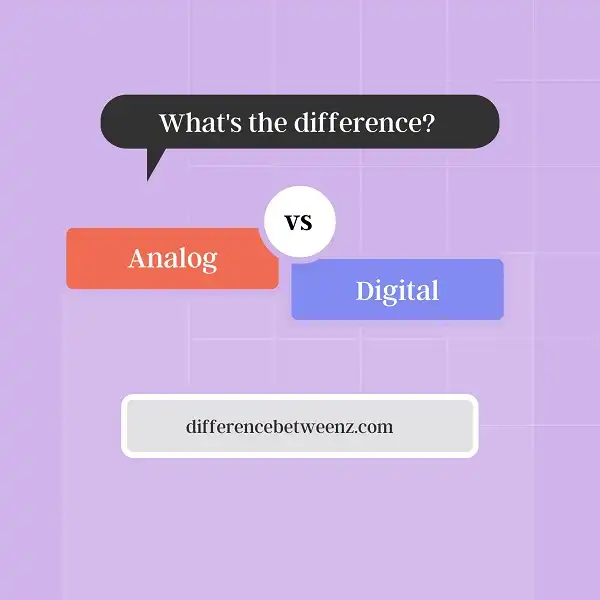In our digital age, it’s hard to imagine a time when analog technology was the only option. Yet, just a few decades ago, that’s all there was. So what is the difference between analog and digital? Let’s take a look.
Analog technology refers to any system that uses continuous physical signals to represent information. This could be anything from a vinyl record to an old-fashioned telephone. Digital technology, on the other hand, converts information into discrete packets of data that can be transmitted over networks and stored in computers. So which is better? Well, that depends on your needs. Analog technology is generally better for preserving sound quality, while digital technologies are more versatile and can be used for a wider range of applications.
What is an Analog?
Analog is a type of data transmission that uses a continuous signal. This signal can be either electrical or optical. Analog data is often used for audio and video applications because it can more accurately reproduce the full range of human hearing and vision. However, analog data is also subject to interference from noise, which can degrade the quality of the signal. For this reason, digital data transmission is often used for applications where fidelity is critical, such as cell phone calls and computer data transfers. Still, analog data has its advantages, and it continues to be used in many applications where reliability and simplicity are more important than fidelity.
What is Digital?
Digital is an adjective usually used to describe computer information that has been translated into binary code. This allows computers to store, process, and display information. If you’ve ever seen a computer screen with a bunch of zeroes and ones (usually written as 0’s and 1’s), that’s binary code. All computer information is ultimately reduced to this on/off, true/false state. To put it in more relatable terms for non-computer people: an Analog is like a mural where an artist paints an image directly on a wall. No matter how many times someone looks at it, that’s the image they’ll see; it can never be changed. Take a picture of that mural, however, and you can have as many
Difference between Analog and Digital
The terms “analog” and “digital” are used a lot in today’s tech-savvy world, but what do they really mean? In general, analog refers to anything that can be measured in a continuous way, while digital refers to anything that can be represented by a finite set of discrete values. This distinction can be applied to a wide range of devices and technologies, from clocks and watches to computers and cell phones.
Analog devices, such as traditional clocks and thermometers, use physical phenomena to measure continuously variable quantities like time or temperature. These measurements are then usually displayed on an analog scale, with a needle or hand indicating the current reading.
Conclusion
In a world where technology is constantly evolving, it can be hard to keep up with the latest changes. One of these changes is the way we communicate- from analog to digital. What does this mean for your business? It’s time to start thinking about how you can make the switch and what that might look like for you and your customers.


